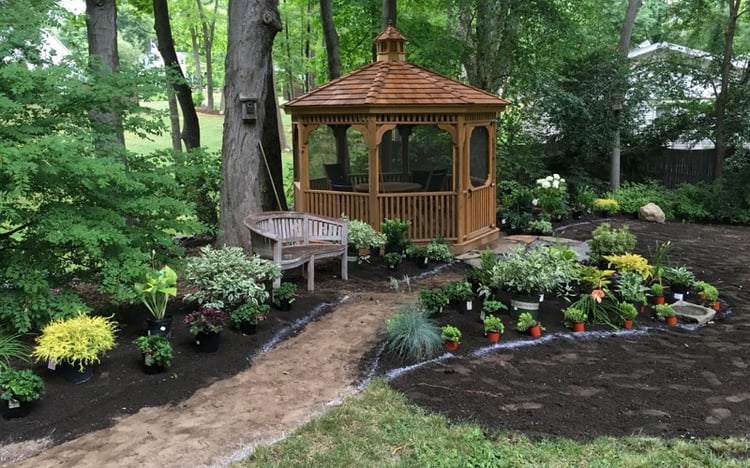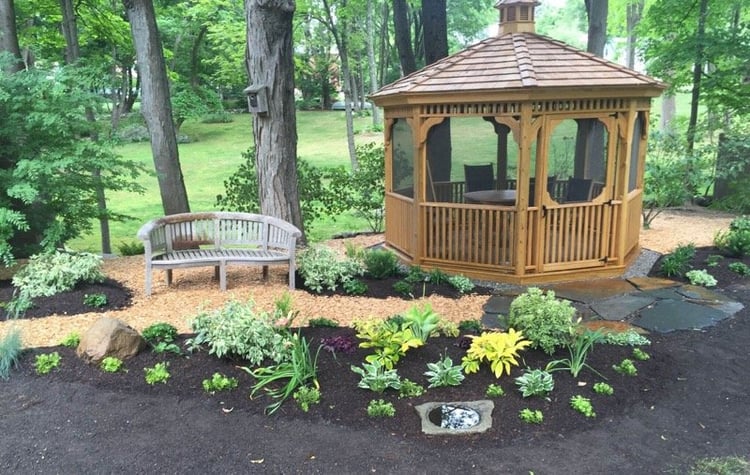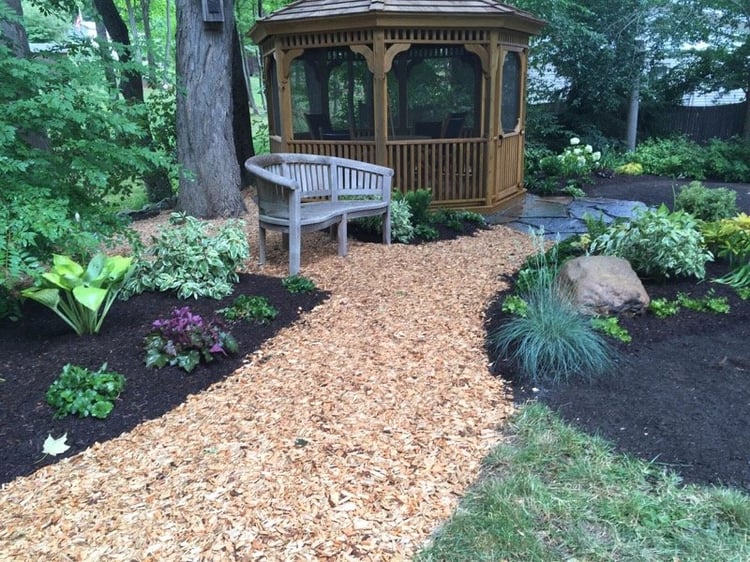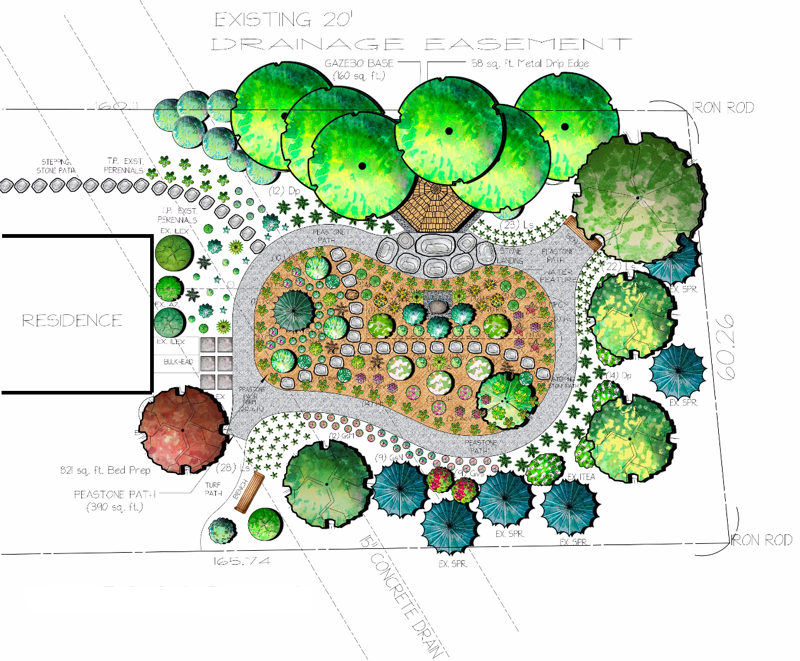If you love the outdoors and growing things, I’ll bet that, at one time or another, you’ve dreamed about the perfect garden – what you’d plant, how it would look – and then you thought “how would I ever manage to maintain something like that?” It’s easier than you think.
In fact, it’s possible to create the garden of your dreams that is both beautiful and manageable. However, it’s easy to make just a couple of mistakes that turn that garden of perfection into a garden of woe.
There are six landscape basics that come into play with the perfect garden and when they are addressed, maintenance becomes totally manageable:
1. Dare to dream
Let your mind wander as you contemplate the perfect garden. It’s okay. Think about the colors and textures you find pleasing. Consider different styles of gardens and what they might contain. Mix and match them in your head. Go to bed at night and drift off thinking about wandering through the perfect garden. What does it look like? As ideas begin to gel, you’re well underway to turning your dream into reality.
2. Craft a vision
While this may sound a little touchy-feely, it’s actually a very tactical step. Start by grabbing an armful of gardening and outdoor design magazines and cutting out the pieces that interest you – they might be patios, pools, fountians, flower beds, shrubbery, and lighting. Pin them to a bulletin board and then sit back and look at them frequently over time. See any common themes running through some of the images? For example, if you’re thinking about installing a pool as part of your outdoor living space, are all the pool shapes free form or rectangular in the pictures you cut out? This reveals some key elements of your approach to design. An understanding of what you really like starts to surface when you do this exercise – and that’s important, considering the investment you’re about to make in turning your dream into reality.
3. Design the project
Once you have a clear vision, it’s time to get it down on paper. Don’t worry about your artistic skills – the goal is to simply diagram or outline what will go where. Try drawing a simple bubble diagram. Put your house in the sketch and add circles where landscape elements will go. As you place garden and landscape features, think about how you will move among them – are there hardscape walkways? Organic pathways? Lawn? As it starts to come together on paper, you should be developing a clearer picture of the outcome and better able to determine if it’s a feasible project that you can pull off on your land.. If certain elements are giving you pause, consider eliminating them. Don’t be afraid to revise – consider your rough plan on paper a “living document” that can evolve.
4. Develop the plan
You’re now at the stage that involves TWO plans: the first is a schematic of what you’re building and the second is a how-to-build-it plan. This is the point at which you need to determine if you have the skills to pull it off yourself or if you need professional help. Be honest about your skillset – just because you think you can do it doesn’t mean you can. Do you have the space and resources available to make it work? What else do you need and how will you get it? For instance, do you have the ability to price out this project? Do you know what’s needed to build it to last?
5. Build it using best practices
By now you’ve thoroughly vetted your plan. You know it’s buildable. Here’s where you take a deep breath and say, “Okay, we’re good to go – what’s the best way to make this happen?” This is no time for guessing or cutting corners. The mistakes you make now you’ll own and they’ll make or break future maintenance and long-term expenses.
 This is the gazebo in place and the garden mapped out in paint with plants set up
This is the gazebo in place and the garden mapped out in paint with plants set up
Say you’re building a pool in the backyard and you drive trucks over a section of your yard in the process of construction. It could take decades to repair the damage to the soil strata because the trucks so heavily compacted it. Or let’s say you chose a whole bunch of non-native plants because you loved how they look, without regard to whether they’re compatible with the local environment. You’ve now just ensured more expensive maintenance because you didn’t select native plants that grow happily in your soil.
Another easy-to-make mistake is not taking the time to properly install plants. For example, you’re so excited about finishing your pool area because family’s coming over this weekend to see it. So instead of taking the time to take the cages and burlap off the shrub and tree root balls, you just plop them in the ground. You’ve now just guaranteed they’ll have to struggle to survive and you’ll be working twice as hard watering and fertilizing them to try to help them grow, when all you had to do was take the time to prepare them properly for getting started in their new surroundings.
 Gazebo in and garden in with woodchip mulch and path
Gazebo in and garden in with woodchip mulch and path
And this is just the tip of the iceberg. There are any number of other potential problems lurking just below the surface, depending on the type and size of your project. That’s why it’s important to work with best practices yourself or work with a best practices firm. It also means following construction standards for longevity and horticultural health.
6. Implement a management plan
Before you even put a shovel in the ground to begin installation, make sure you have developed a management plan you can successfully implement afterwards. Plan to bring your project through its various stages, starting with acclimation – you’ll need to be prepared to address the shock that plants go through after being transplanted. Next is the establishment phase in which the plants send out their roots. Once your plants are established, you’ll need to have a plan ready to manage the maintenance and keep up the landscape over its lifetime. Quantify it to make sure you have the resources necessary to support it in terms of time and dollars: “If I spend $100,000 on a landscape, how much am I willing to spend each year to maintain it?”
 Close up of the woodchip path to gazebo
Close up of the woodchip path to gazebo
It all boils down to this. If you’re looking for beauty, it’s in the eye of the beholder. If you’re looking for longevity, make sure you pay homage to nature and respect it. Make sure you are giving landscape development best practices their just due attention. Go slowly, implement incrementally. It’s stability and balance in the long run that make maintenance manageable.
Tweetable Tip: Dare to dream as a first step toward your perfect landscape. https://ctt.ec/r3jsn+




 This is the gazebo in place and the garden mapped out in paint with plants set up
This is the gazebo in place and the garden mapped out in paint with plants set up Gazebo in and garden in with woodchip mulch and path
Gazebo in and garden in with woodchip mulch and path Close up of the woodchip path to gazebo
Close up of the woodchip path to gazebo
Leave a comment